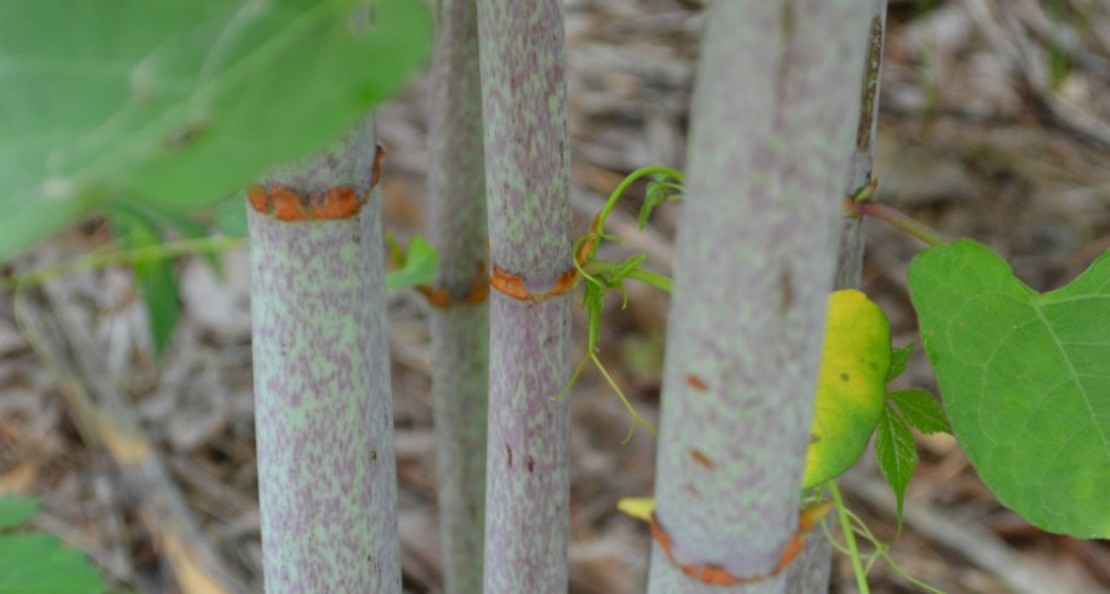
Japanese Knotweed Recipe and Monograph Excerpt
“In addition to its medicinal properties, Japanese knotweed shoots have been used as a common food in China as well as Japan, where it is known as itadori-kon or just itadori, which means “removes pain.” Itadori is traditionally prepared by preserving the shoots in salt for up to 10 days, or may be cooked fresh (Workman, 2011). As a food, knotweed provides vitamin A, vitamin C and its flavonoid cofactor rutin, as well as important minerals including zinc, potassium, phosphorus, and manganese (Brill, 2008).
After its introduction to North America in the mid-nineteenth century, it was used by the Cherokee as food (Moerman, 2003). In India and Southeast Asia the dried leaves are also used like tobacco (Kirino et al., 2012). Young shoots (a foot long or less) can be prepared and eaten like asparagus or rhubarb, and impart a tart flavor and a tender, slightly mucilaginous texture in sweet or savory dishes. Recipe ideas include a pureed soup, jams and conserves… muffins, pies, crumbles, cake, bars… sherbet or sorbet, and even wine is sometimes made with knotweed.”
The above information was excerpted from The Herbarium Plant Monograph Database. For more information on our exclusive membership website, visit herbarium.herbalacademyofne.com.
Traditional Japanese Knotweed Recipe
Itadori
Adapted from Shikigami, by Dion Workman
Sesame oil (to taste)
Tamari or umeboshi vinegar (to taste)
Sesame seeds (black and/or white)
- Harvest Japanese knotweed stalks when they are less than a foot tall by snapping off the stems, then strip the leaves and rinse the stalks. If any of the stalks seem tough or fibrous, peel them or discard in favor of more tender pieces.
- Chop the stalks into 3 inch sections (should yield about two cups of vegetable).
- Boil the stalks briefly, just until tender, for about 4 minutes.
- Drain and garnish with sesame oil, tamari, and/or vinegar, and sesame seeds.
- Serve over rice or alongside nori rolls.
For more reading, get the full plant monograph in The Herbarium membership, just $3.75/month!
REFERENCES
Brill, S. (2008). Shoots and greens of early spring in northeastern North America. Mamaroneck, NY: S. Brill.
Kirino, A., Takasuka, Y., Nishi, A., Kawabe, S., Yamashita, H., Kimoto, M., & Tsuji, H. (2012). Analysis and functionality of major polyphenolic components of Polygonum cuspidatum (itadori). Journal of nutritional science and vitaminology,58(4), 278-286.
Moerman, D. (2003). Native American Ethnobotany: A database of plants used as drugs, foods, dyes, fibers, and more, by Native Peoples of North America. [Website]. Retrieved on 5/23/2015 from http://herb.umd.umich.edu/
Workman, D. (2011). Shikigami. [Website]. Retrieved on 05/25/2015 from https://nakazora.wordpress.com/tag/recipe/







